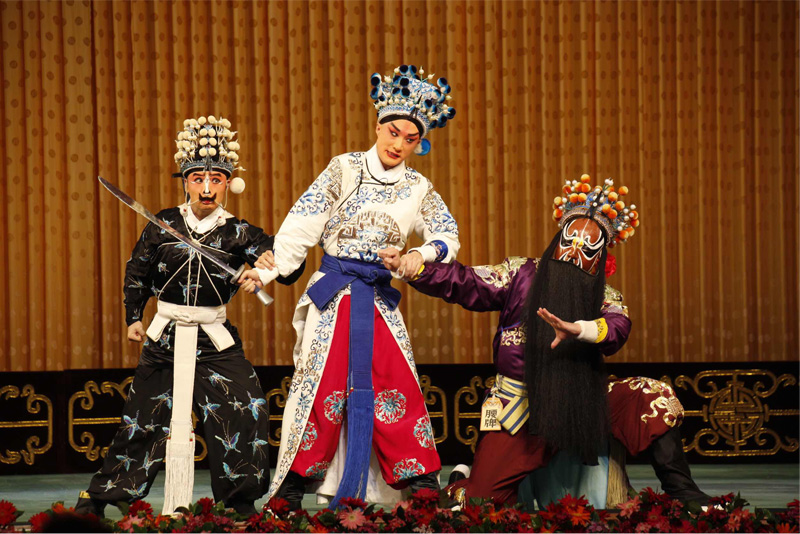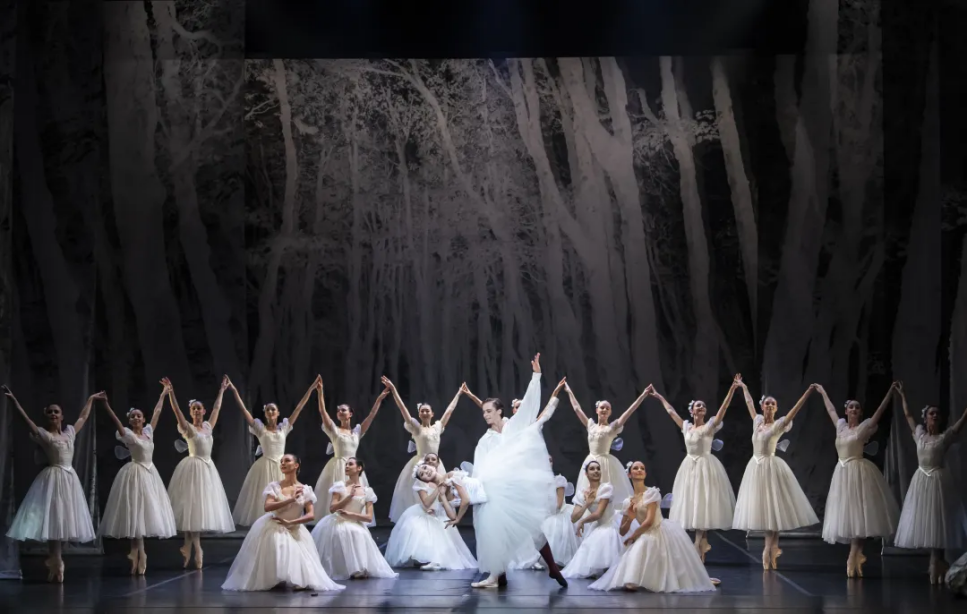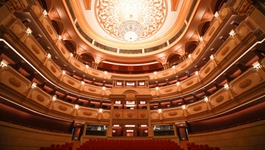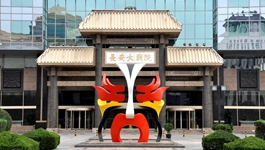Peking Opera: A synthesis of Chinese operas combining music, vocal performance, mime, and acrobatics

Peking Opera [Photo via tuchong.com]
Peking opera is one of the five major traditional operas in China. Its vocal tones are mainly composed of Xipi and Erhuang, to the music played by such instruments as huqin, gong, and drum. Peking opera is the dominant form of Chinese opera, combining music, vocal performance, mime, dance, and acrobatics.
Origin
Peking opera grew out of Huiju opera, a folk opera originally popular in the regions south of the lower reaches of the Yangtze River in the early Qing Dynasty (1644-1911). Due to the strong mobility of Huiju troupes, performers were exposed to frequent contact with other types of drama, incorporating different regional musical systems and tunes.
In 1790, to celebrate the eightieth birthday of the Qianlong Emperor (reigned 1736-1795), the Four Great Anhui Troupes brought Huiju opera to Beijing to join the celebration. Their performances soon found an audience, marking the beginning of the more than 200 years of history of Peking opera.
Peking opera is a fusion of some older operatic forms. From 1840 to 1860, it finally congealed as a mixture of elements of Qinqiang opera, Hanju opera, certain strengths of Kunqu opera, and local tunes of Beijing. The new form then began to create its own innovations. For example, melodies were simplified, and were played with different traditional instruments than those used in earlier forms.
Roles
Peking opera was originally an exclusively male pursuit. The appearance of women on the stage began unofficially during the 1870s, when female performers began to play male roles and declared equality with men. The characters staged in Peking opera are not based on the appearance of people in daily life. Artistic exaggerations are applied in elaboration of makeup and costumes according to gender, personality, age, occupation, and social status of the roles in different plays. In general, the roles on the stage are divided into four categories: Sheng (male), Dan (female), Jing (male, painted-face characters) and Chou (male, clowns). Generally, actors train for one category of role; crossover artists are exceptionally talented and rare. The basic divisions of roles, though, are further sub-divided.
Costume and Makeup
Audiences can tell a player's gender, role, occupation and even personality by the color of his robe or the wings on his hat because they all convey different meanings. For example, lower-level officials usually wear orchids or Buddhist knots and only the emperor could wear yellow. The costumes of Peking opera can be divided into six main categories.
Peking opera uses exaggerated expressions and methods to build different types of figures and characters from facial features, hairstyles, headwear and artificial whiskers. Facial make-up can help cover defects to make the character better fit the plot. In the meantime, exaggerated make-up can help the audience recognize a character over a long distance.
Musical Instruments
Erhu: The Erhu is one of main musical instruments of Peking opera. The canister is made of bamboo. Its mellow and rich sound creates perfect harmony with a high-pitched and bright Jinghu timbre that takes root in the heart and mind. Thus, a contrast between the timbre and range is produced, enriching the sound quality.
Drum: Percussion instruments of different shapes and sizes are used in Peking opera to describe battles, court trials, executions, and similar scenes.
Gong: Players take the gong's rope with their left hand and beat the edge of the gong with their right. It's used in scenes where military officers enter the stage or at highly emotional moments.
Yueqin: It supports and enriches the voice and accompaniment in Peking opera so that the voice can be smoothly conveyed and increases the sense of rhythm so that singers can better express their emotions.
Sanxian: It has the widest range and richest timbre among the major musical instruments of Peking opera. Its various tones range from forceful to exquisitely soft.
Selected Peking Opera Classics
The Drunken Concubine (Gui Fei Zui Jiu)
The Drunken Concubine is almost a one-person show. Set in the Tang Dynasty (618-907), it portrays Yang Yuhuan, the emperor's favorite concubine and one of China's legendary beauties, arranging a banquet one night and waiting for the emperor to come. But after realizing she's been stood up because the emperor preferred another concubine over her, Yang decides to drink alone. Perhaps the most memorable presentation of the role was by Master Mei Lanfang (1894-1961), who perfectly portrayed Yang's various stages of intoxication, her jealousy and bitterness, and her intention to forget all the unhappiness.
Farewell My Concubine (Ba Wang Bie Ji)
Based on real events from more than 2,000 years ago, the opera recounts a famous tragic love story set in the transitional period between the Qin Dynasty (221-206 BC) and the Han Dynasty (206 BC-AD 220). Xiang Yu, king of the Western Chu, is battling his arch ravel Liu Bang for control of the empire. The night before their final battle, Xiang's troops are outnumbered and surrounded by Liu's army. King Xiang hears Liu's troops singing Western Chu songs, suggesting his homeland has already been subjugated. Seeing the king is in deep despair, his concubine Yu performs a sword dance to show her devotion to him. Fearful of being a burden to the king during the ultimate battle, Yu commits suicide with the king's sword right after the dance.




